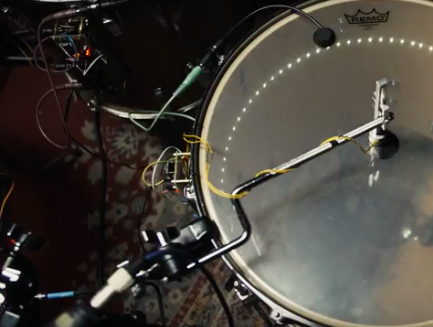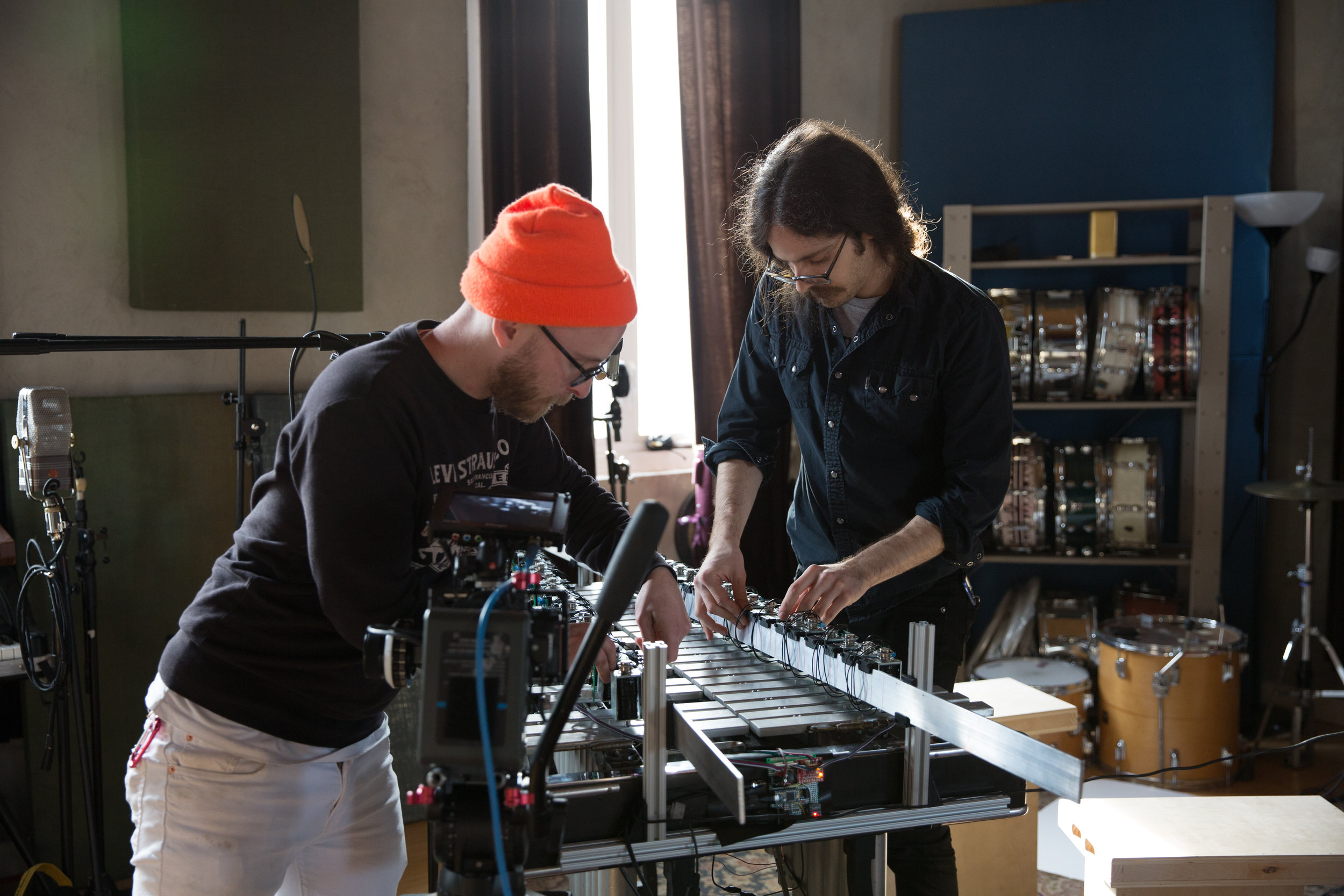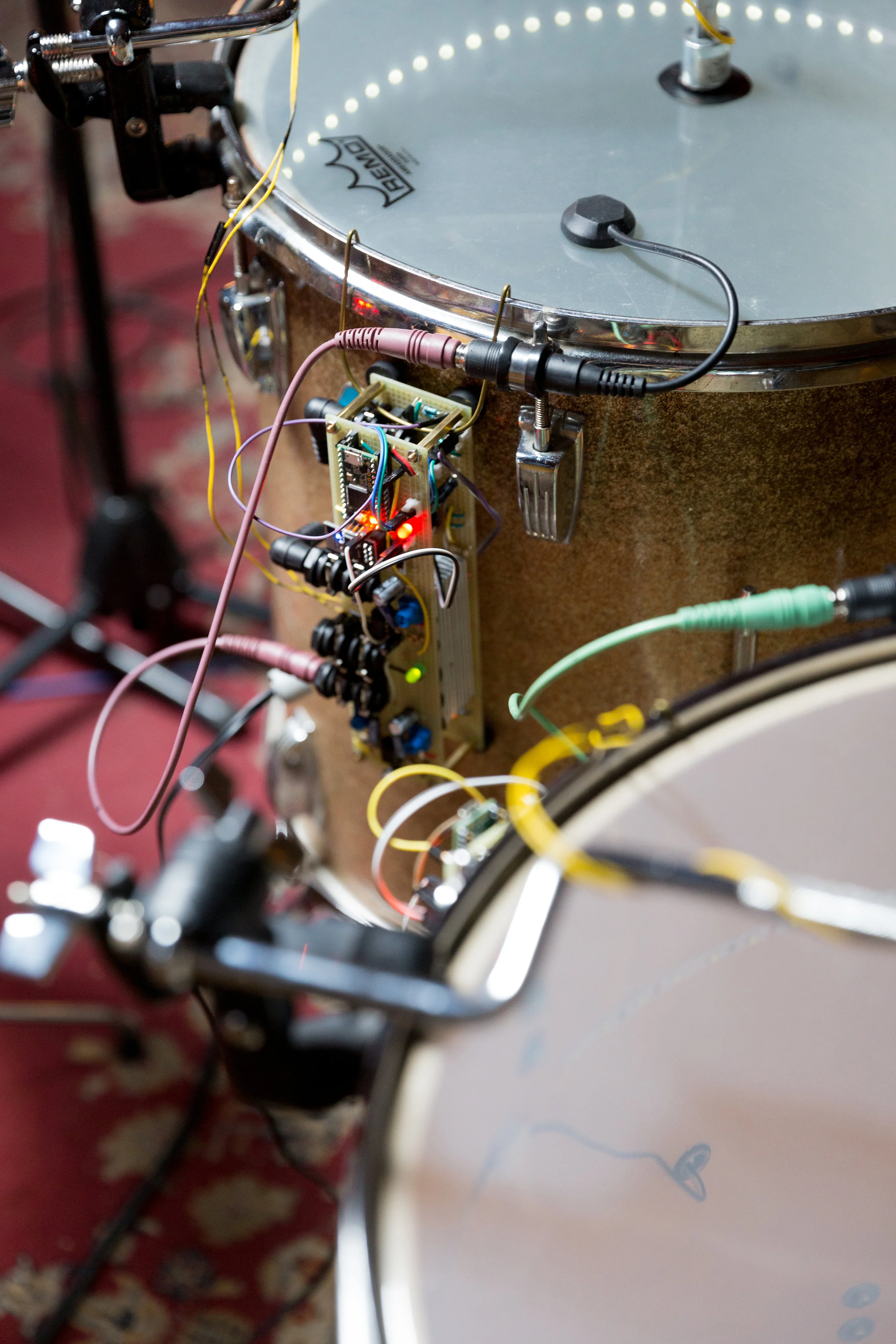It takes traditional approaches to percussion and turns them on their heads, using technology to re-envision the medium. Part art installation, part experimental rock show, part interactive tech demo, 'Drumhenge' promises to provide a new musical experience for artist and audience alike.
Designed and built over the course of a year, 'Drumhenge' is a collaboration between artist Peter English and researcher Jeff Gregorio at the ExCITe Center.
Photo by Kristie Krause
This work is supported by a grant from the John S. and James L. Knight Foundation's arts program, which aims to engage and enrich Philadelphia through the arts. Peter is working in close collaboration with MET-lab researcher Jeff Gregorio to develop augmented instruments for use in an upcoming live music performance and interactive sound installation in June 2017.
Preliminary work has focused on using acoustic synthesis methods to augment the sound production of acoustic drums. The system uses electromagnet actuators capable of inducing drum heads to vibration using both synthesized signals and modulated feedback taken from the drum. Jeff and Peter have explored various methods of sound production and interaction on the actuated drum prototypes, and are currently working on scaling the system to a larger sixteen-drum ensemble.
The system uses a power amplifier designed by former MET-lab researcher Dr. Andrew McPherson [1], and incorporates a custom preamplifier, signal processing on a Teensy 3.6 microcontroller, and inter-instrument communication on an ESP8266 wifi-enabled microcontroller. Schematics, board layouts, and firmware are available at https://github.com/JeffGregorio/ActuatedDrums.
Early prototype, playing with feedback from sensor on the batter head to EM actuator on the resonant head. Capacitive proximity sensing on the drum hoop controls feedback gain.
Network of eight drums controlled remotely. Demonstrating the effect of phase delay in feedback path from sensors on the batter heads to EM actuators on the resonant heads.
Demonstrating some possibilities of wireless propagation of notes from node to node. Nodes can be chained or configured to reflect back to the source that triggered them.






